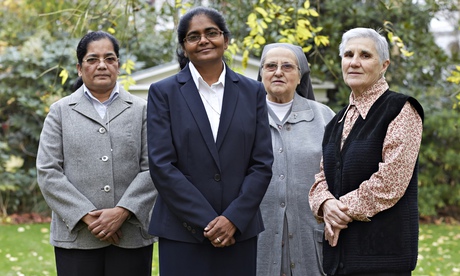It’s Saturday afternoon and in an unmarked police car in central London a burly policeman is accompanied by a tiny, bird-like nun.
A raid is about to take place on a brothel whose inhabitants, the police believe, include women who have been trafficked into Britain from eastern Europe.
The nun is an integral part of the police operation.
It could be a storyline from a film, but there isn’t a camera in sight.
This is real life, part of the UK’s imaginative and innovative approach that has made it a frontrunner in the battle against human trafficking; and the scene explains why London will this week host the second meeting of the Santa Marta international consortium to stop the trade.
Home secretary Theresa May, Metropolitan police commissioner Sir Bernard Hogan-Howe and Cardinal Vincent Nichols will join police chiefs, victims’ organisations, ambassadors and church leaders from 27 countries for the conference, taking place at Lancaster House on Friday and Saturday.
It is likely to be followed by announcements next weekend of projects aimed both at more effective policing and education campaigns to raise public awareness of trafficking.
On Saturday the Home Office said therecould be as many as 13,000 slavery victims in the UK.
“It’s a terrible crime that wrecks people’s lives, and it goes on in the midst of ordinary life – on ordinary streets in cities and towns across Britain – yet many people know nothing about it,” said Kevin Hyland, newly appointed as the country’s anti-slavery commissioner, who will play a leading role at the conference.
“We need to tell people what they need to look out for, the signs that someone might be being coerced into living a life they don’t want to lead, so that they can help in the fight against trafficking.” Continue reading
Article and Image:
- The Guardian
- See also: articles in The Sydney Morning Herald and Catholic Herald
